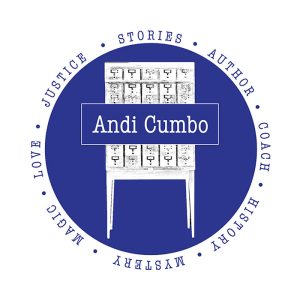
Master-at-Arms Seaman Rhonda McGee, left, spars with Patricia Cuevas during an exhibition match in the preliminary rounds of the 2011 Armed Forces Boxing Championship. C
© 2011 Official U.S. Navy Page, Flickr | CC-BY | via Wylio
I’m torn. I’m not sure which way to turn . . . or rather, which page to turn. I have four books I’m enthralled with, and when I am ready to read, I’m not sure what to do. Do I pick up A Lesson Before Dying and let myself fall into Jefferson’s journey to know he is a man? Or do I give myself the indulgent pleasure of Neil Gaiman’s The Ocean at the End of the Lane? Maybe I need to devote some time to the beautifully-written but dense biography of Deitrich Bonhoeffer, Strange Glory? Yet, I’m enthralled with Billy Coffey’s The Curse of Crow Hollow and want to meet the witch. Or perhaps I need to add a book by woman to this mix of men? I’m in conflict.
I suspect most of you know this particular tribulation. 🙂
It’s these conflicts – or if the word conflict has too many painful connotations for you, try tension. It’s these tensions, these choices between two things – two books, two jobs, two people, two ways of living – that drive our lives forward. A life of just the status quo sounds idyllic at time, but living things cannot survive in stagnation. We need mutability, change, choice, even conflict and tension to survive. (I’m sure there’s a metaphor here – something about surface tension and water and those little insects that scamper on it, but I’m at a loss for that today. Feel free to step in and offer it up as a comment if you’d like.)
So it is with writing as well. Good writing needs tension, or conflict to use the traditional creative writing class lingo. And it needs conflict fast, like from the first paragraph, to grab the reader. Otherwise, even the most beautiful prose, even the most amazing character, even the most powerful description will fall flat as a soggy towel by the side of a pool. No one likes to pick up a soggy towel.
Wise writers build that conflict – be it internal or external – in right away. Take these excerpts as examples:
While I was still in Amsterdam, I dreamed about my mother for the first time in years. – The Goldfinch by Donna Tartt
124 was spiteful. Full of a baby’s venom. The women in the house knew it and so did the children. For years each put up with the spite in his own way, but by 1873 Sethe and her daughter Denver were its only victims. – Beloved by Toni Morrison
It was the best of times, it was the worst of times . . . – A Tale of Two Cities by Charles Dickens
I exaggerate. – Lying by Lauren Slater
Immediately, we know that Theo’s mother is dead, that something awful is in Sethe and Denver’s house, that the culture is in turmoil, that we might need to take caution with Slater’s words. Tension. Conflict. Bam!, right from the get-go.
It’s crucial to set that up in our works right away – be they memoir, fiction, essay, poetry. It’s that tension that the reader rests on (ah!) like a water bug on the surface of the pond. We need that conflict as readers to find our footing, to find our way in.
It can be tempting to start with something beautiful, prosaic words and gorgeous imagery – we all crave beauty. But we NEED conflict to be able to see it. If the story is too beautiful and held straight on in our faces, it’s hard to see anything beyond our noses. Conflict is what gives us access and perspective as readers. It’s what holds our attention – be it through a car chase or a love triangle or the struggle for one character to come to terms with his own beauty.
Once you’ve started with the conflict, your main work as a writer is to keep teasing that conflict apart, keep splashing it up and breaking it open for us so we can see how the characters work through it. We want to believe they can find a way; we need to believe that, even if they don’t in the end. That conflict is the central element that holds an entire work together, so it needs to be handled with care and deliberate attention. It needs to be embraced, contained, controlled.
So don’t back away from conflict. Step up to it, wrap your arms around it, and struggle through its journey. We’ll follow along.
What first lines do you love for how they draw you in with the central tension of the story?
By the way, the conflict over what I’ll read still remains. (See what I did there?) What would you dive into?
